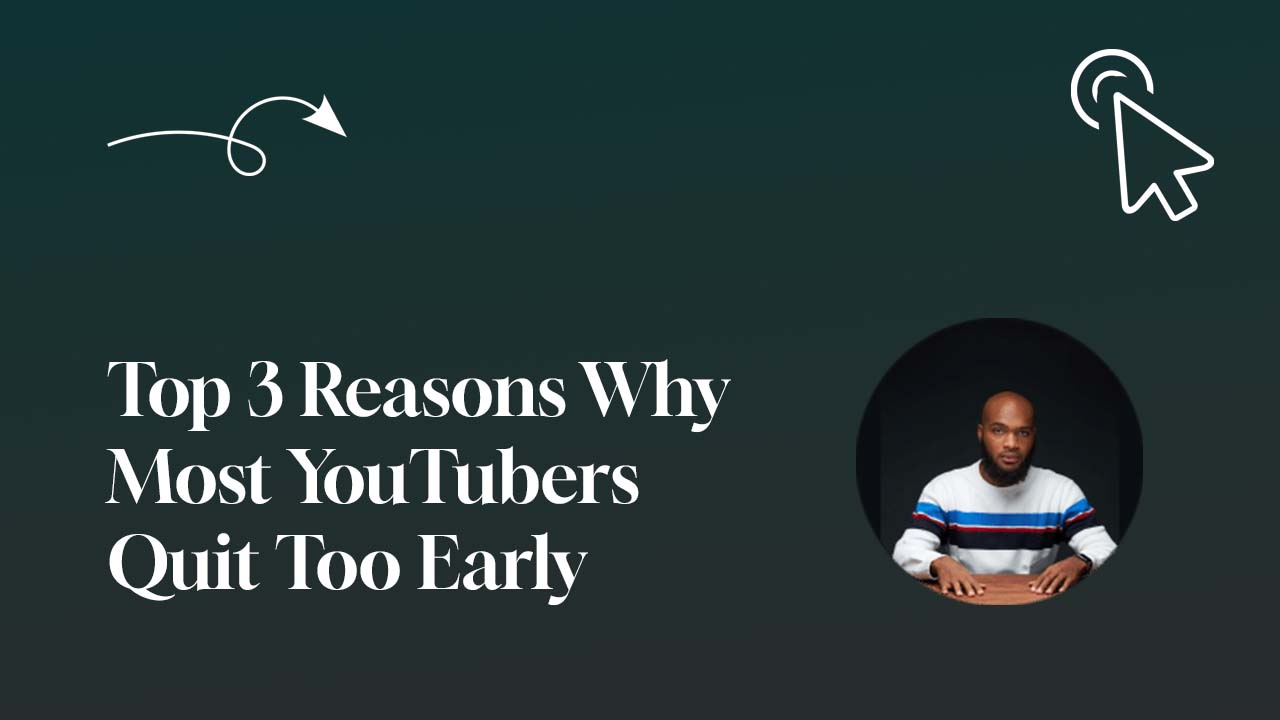You could spend hours writing the perfect script.
You could travel, film for days, edit every second with care, and speak with conviction.
But none of it matters if people don’t click.
That’s the part most creators struggle to accept:
A video’s success starts before it’s even played.
If the title doesn’t grab attention, the content is never seen.
If the title doesn’t spark curiosity, the viewer never makes it past the thumbnail.
If the title doesn’t promise something worth watching, all your effort gets skipped.
This is why learning how to write better YouTube titles is one of the highest-leverage skills you can build as a creator.
Let’s break it down.
Why Your Title Matters More Than You Think
YouTube is a competitive attention economy.
Every time someone scrolls, your video competes with hundreds of others.
Your title is the first filter.
It helps the viewer decide:
- “Is this worth my time?”
- “Will I learn something here?”
- “Do I feel like watching this right now?”
When a title works, it draws people in, holds their interest, and sets the stage for the video to succeed.
When it fails, it doesn’t matter how good the content is.
In fact, many high-quality videos fail simply because of the packaging
Let’s look at what actually makes a title perform.
What Makes a YouTube Title Clickable?
Three ingredients separate high-performing titles from ones that get ignored:
1. Curiosity That Creates a Gap
Curiosity is what makes someone pause.
The best titles don’t just give information.
They raise a question in the viewer’s mind.
For example:
- Too direct: “How I Made $10K in One Month on YouTube”
- More compelling: “I Broke Every Rule and Still Made $10K in One Month”
The first one gives away the story. The second one invites a question:
“What rules did you break?”
“How is that even possible?”
The moment you open a curiosity gap, you create tension.
And that tension pulls people in.
2. Emotion That Drives Action
People don’t click because they understand.
They click because they feel something.
Strong YouTube titles often include a layer of emotion:
- Shock
- Surprise
- Excitement
- Conflict
- Urgency
A well-placed emotional cue makes your title more relatable and memorable.
If you can make someone feel something in five to seven words, you’ve already won half the battle.
3. A Promise That Feels Clear and Compelling
Even if a title is emotional and curiosity-driven, it still needs to make a promise.
That promise could be a result, a transformation, or a specific outcome.
It’s not about being clickbait.
It’s about being intentional.
Viewers want to know what they’re getting into.
And when your title sets the right expectation, they’re more likely to click and… stay.
Case Study
When I created a documentary on wealth in Atlanta, I had a working title:
“Exploring Black Wealth in Atlanta.”
It was accurate. It described the topic.
But it didn’t carry energy, tension, or curiosity.
So I changed it to:
“Inside America’s City of Black Millionaires.”
Immediately, this raised several questions:
- Which city?
- Why that city?
- How did that happen?
- What’s the story behind that?
The content stayed exactly the same.
But once the title changed, the views surged.
This is the power of packaging.
When the title is strong, the video gets a chance to perform.
A Step-by-Step Framework to Write Better Titles
Here’s a process you can use to improve your next video title:
Step 1: Identify the Most Emotional Moment in Your Video
What is the moment that triggers the strongest reaction?
Is it a transformation, a bold statement, or an unexpected outcome?
Build your title around that moment.
Step 2: Ask “What Would Make Someone Curious?”
As you brainstorm titles, test them by asking:
“If I saw this and didn’t know who made it, would I still click?”
If not, keep refining.
Replace flat descriptions with tension, contrast, or contradiction.
Step 3: Add Specificity
Vague titles feel forgettable.
Specificity builds trust and interest.
Use exact numbers, names, locations, or surprising details.
For example:
- Vague: “I Traveled Somewhere Crazy”
- Specific: “I Survived 7 Days in the World’s Coldest City (−71°C)”
The second one immediately paints a picture and raises the stakes.
Step 4: Keep It Short and Strong
Your title should be as concise as possible, but not shorter than necessary.
Aim for 6–10 words when you can.
Remove filler and weak adjectives.
If you’re stuck between two versions, ask which one would be easier to understand in two seconds or less.
Compare Your Title Before You Publish
Before you hit upload, go to YouTube and search for your topic.
Look at the top five results.
Now ask yourself:
- “Would my title stand out here?”
- “Would it make someone curious even if they weren’t looking for it?”
If your answer is no, it’s worth rewriting.
This extra 15 minutes can lead to 10 times more views.
Not because the content is different.
But because the entry point is stronger.
Recap: What Makes a Great YouTube Title?
- It creates curiosity without giving everything away
- It taps into emotion or conflict
- It promises a story or transformation
- It uses specific, interesting details
- It stands out among similar videos
- It’s written with the viewer in mind, not the creator
You don’t need to be a copywriting expert.
You don’t need to clickbait your audience.
You just need to treat your title like the most important part of your upload because it is.
When you learn to write better titles, your views increase.
Your content finally gets seen.
And your message has a chance to make an impact.
P.S. If you want to learn how to write titles, thumbnails, and hooks that consistently grow your channel, the YouTube Creator Academy shows you exactly how to do it
👉 Join the YouTube Creator Academy
